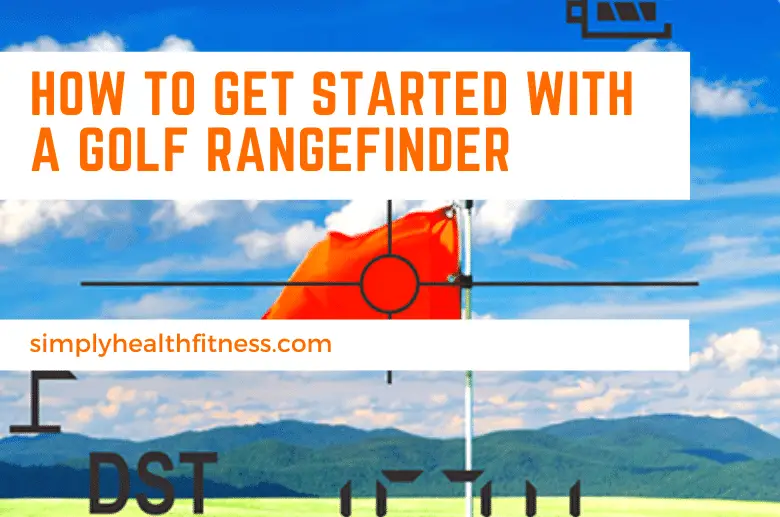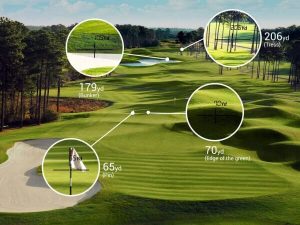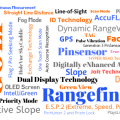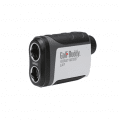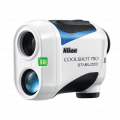It is not very difficult to know how to use a golf rangefinder. Still, some new players struggle since they do not know how this golf distance calculator device works.
In this how to use a golf rangefinder article, we’ll tell you how does a rangefinder work and also highlight golf rangefinder using tips so you can easily use this incredible device to improve your game and have more fun playing.
Without much ado, let’s get started.
Why Do I Need a Golf Rangefinder?
Before we move to why you need a golf rangefinder, we need to be clear about what it is and what it does. Also known as a golf scope, it measures the exact distance from you to any object including the flag or your target.
They speed up game-play and make it more exciting by allowing players to hit targets that may otherwise look impossible. However, we must mention that some rangefinders are not tournament legal.
Types of Golf Rangefinders
Laser vs GPS Rangefinders
You will find two types of golf rangefinders or on the market:
| Laser Rangefinder | GPS Rangefinder |
| Uses laser technology to calculate distances | Uses GPS to map the area and calculate distances |
| No pre-programming needed | Need to be pre-programmed, i.e: select the right course |
| More accurate – up to 1/10 of a yard in some cases | Less accurate than laser rangefinders |
| You can only view distances by your line of site | You can view or measure the distance to a flag even if it is around a bend |
| Cannot tell you exactly how far you hit | Can tell you exactly how far you hit by tracking distance between shots |
Golf laser rangefinders use “First Target Mode” to identify close objects such as a flag in the golf course. This technique involves finding the closest object by ignoring distractions like animals and trees.
Related read: Best Golf GPS Watch 2021
Golf vs Hunting Rangefinders
Now, the question arises – are hunting rangefinders and golf rangefinders the same? They’re not the same but they do have some similar features.
On the other hand, hunting rangefinders make use of “Distant Target Mode” that focuses on distant targets in the wilderness.
Hunting rangefinders are more precise than golf rangefinders but you may have to compromise on speed since they tend to be a little slower. They also differ in terms of range. Most golf laser rangefinders cover up to 400 yards. Some may offer more coverage but that comes at a cost – less accuracy. Hunting rangefinders easily cover 1,000 yards but they can’t tell you exactly where the flag is.
Let’s now ask, ‘can you use a hunting rangefinder for golf?’ Despite these differences, you may be able to use one device for the other but you’ll not get the same accuracy because they’re made to do different jobs.
How to Use a Golf Rangefinder?
Now that you know how does a rangefinder work, here’s a step by step on how to use a golf rangefinder.
Purchasing decisions
The first step is to buy a rangefinder that offers a good range. Remember that there is usually a trade-off between accuracy and range. As a player, you will most probably never need a unit that covers more than 400 yards, despite the fact that there are machines that can offer more.
The rangefinder you chose must go beyond the longest hole. Next, it is time to have a look at the increments and magnification levels. The rangefinder must offer a clear view when you magnify so you can see well. Also, keep extra batteries just in case you need them and download the golf course you’re going to just in case you have a GPS golf rangefinder. Check out our golf laser rangefinders buying guide for a detailed analysis and recommendations on the best golf rangefinder for the money.
Preparing to Use the Golf Rangefinder
Standing Position: Most rangefinders are lightweight and easy to hold and use with a single hand. It’s best to stand outside the tee box to have a clear view. Even if the pin isn’t in your range, your yardage will be relevant and you will be able to see trees, water hazards, etc.
Adjust the Vision: Find your target before you attempt a swing and pan away. Your eyes must be comfortable and at ease. Consider adjusting the eye hole if you find the image to be blurry. Some units require that your eye touches the machine and some require you to keep a small distance to see clearly.
Locking a Target: Hold the rangefinder up to the eye and stand at a place that offers a clear view of the hole. We suggest that you look at the target manually before using a rangefinder. You must stand next to the ball in the fairway. Once you get a clear view, it’s time to line up the bottom of the flag with the line ‘Green’ in the viewfinder. You will now have to find the yardage. This will be achieved by reading the numbers that are lined up with the flagstick top. Pick the right club based on these numbers and attempt your shot.
See this tutorial video on how to use a golf rangefinder for more tips:
What if the View is Obstructed?
Here are some tips on using golf rangefinder when the view is obstructed:
- Use the flagstick’s lowest stripe to line up the bottom line in your rangefinder.
- Check the numbers that are lined up with the flagstick top.
You will have to do a bit of maths to get the result:
-
- The stripe number (x) the number lined up with the flagstick top
- Divide the resultant number by 8
How to Hold a Rangefinder Steady
Since golf is played in the open, it is natural for there to be wind, which can cause your hand to move. This will result in problems because it may not only end up giving you incorrect readings but may also affect image quality.
Other causes of a lack of steadiness include weak hands, nervousness, and some medical conditions.
If you are struggling to remain steady then check these tips:
- Use one hand to hold the rangefinder and rest your elbow on your chest. This will prevent your arm from shaking.
- Make sure you’re confident and not nervous. Relax before you play and concentrate on the aim. Nervousness can lead to temporary shakiness and blurred vision.
- Remember that it is natural to shake a little in the beginning. You will improve with time
Related reading: Best Golf Rangefinder For Shaky Hands
Know When to Use the Different Features and Modes of a Golf Rangefinder
Slope Mode
One very useful feature is the slope. This feature can be used when there are elevation changes. Since slopes and hills can affect your distance, this feature is of huge importance. However, it may not be allowed in tournaments. We suggest you opt for a unit that lets you turn this feature off to make the machine tournament legal. Bushnell, for example, calls it exchange technology.
Here’s how to use slope technology
- Make sure you’re parallel to your target
- Set the sights according to your requirements
- First aim at the ground and then at your target to let the machine calculate the elevation or slope.
Other important features include
Targeting Mode: Different laser rangefinders use different targeting modes. Some may offer the same features but come under different names based on the company you have selected.
Some of the most popular modes include:
- First Target Priority Mode
- Pin Seeking Mode
- Distant Target Priority Mode
- Scan Mode
- Angle/Slope Compensation Mode
- Fog or Rain Mode
Know more about each of the modes by checking our glossary page.
- Jolt or Pulse Vibration: This feature lets you know when a target gets locked by sending a pulse or vibration.
- Map Download: You will find this feature on a GPS golf rangefinder. They come with their own mobile apps that come with pre-downloaded maps so you do not have to worry about anything. Bushnell, for example, offers more than 36,000 international golf courses.
Not all features may be available on all machines. Plus, how each works also differs. For example, 8-second Continuous Measurement is a feature you will find on many Nikon machines but not on others.
Do Not Become too Dependent on Your Golf Rangefinder
A golf ranger is bound to make your golf game more exciting and give you more opportunities to improve. However, it is important to not become too dependent on your golf rangefinder because:
- Features such as the slope are not tournament legal. If you count on your golf rangefinder too much, you’d never be able to make it big as a pro.
- You may not always have access to one due to no battery, poor weather conditions, etc.
Hence, use a golf rangefinder to improve your golf game but take on challenges by playing without one as well.
Conclusion
Now that you know how rangefinders work and how to use a rangefinder, we’re sure you will have no problem using one. The key lies in picking a rangefinder according to your requirements. For example, it shouldn’t be too heavy if you have trouble handling heavy equipment. Also, it should be tournament legal if you intend to play professionally.
While this guide covers all tips on how to get started with a gold rangefinder. For the exact golf rangefinder using tips, it’s important that you go through the manual it comes with. You can also turn to videos on how to use a golf rangefinder.
